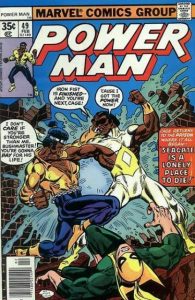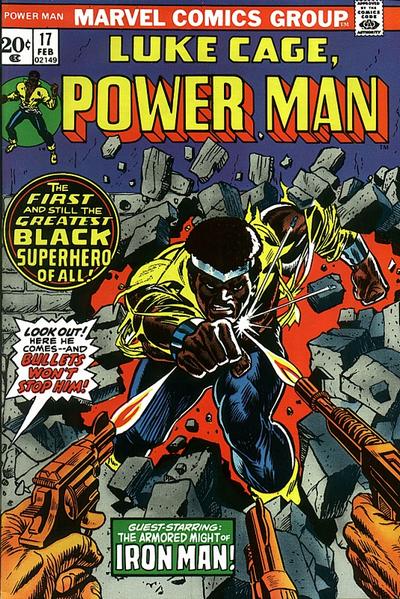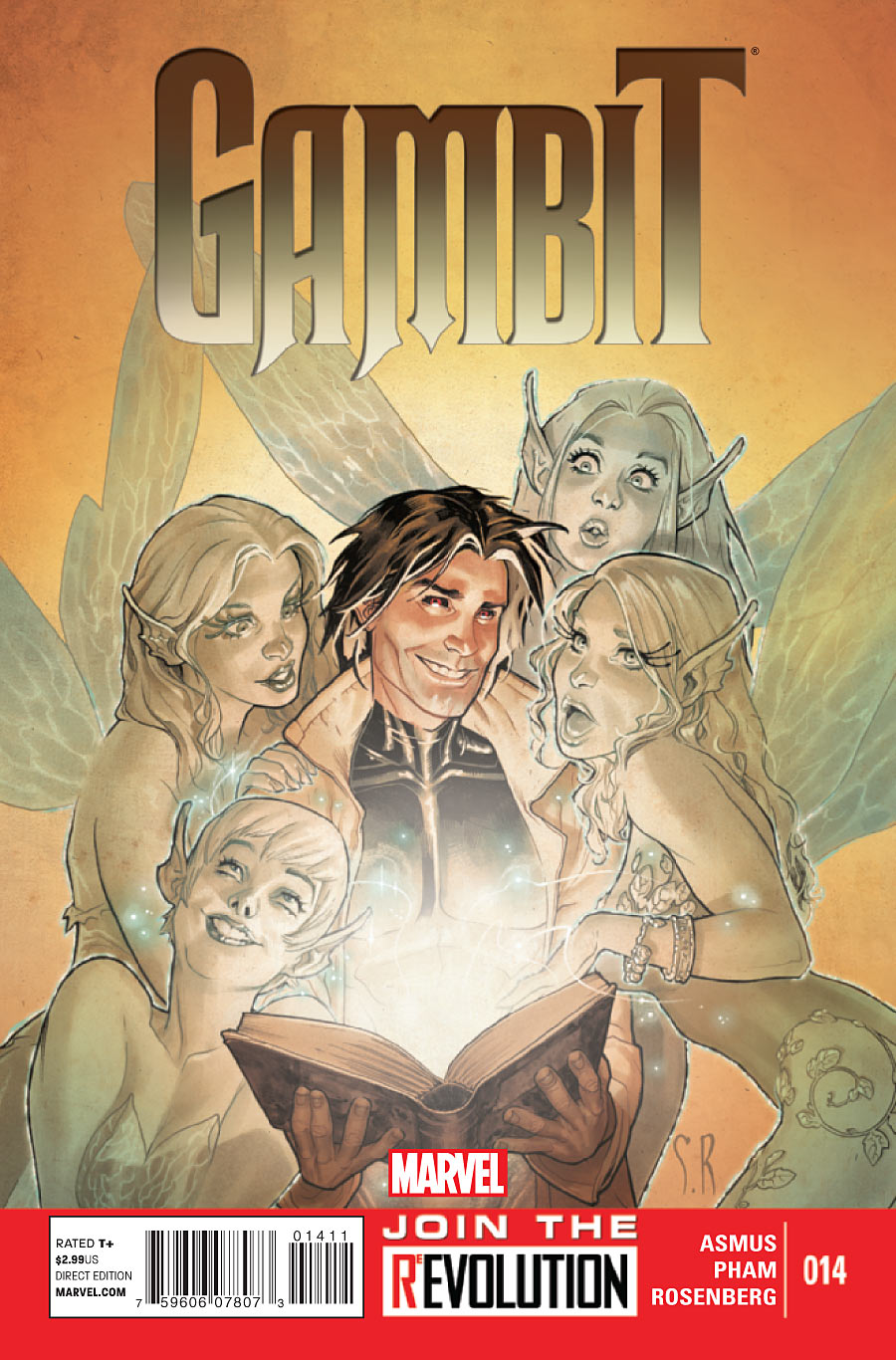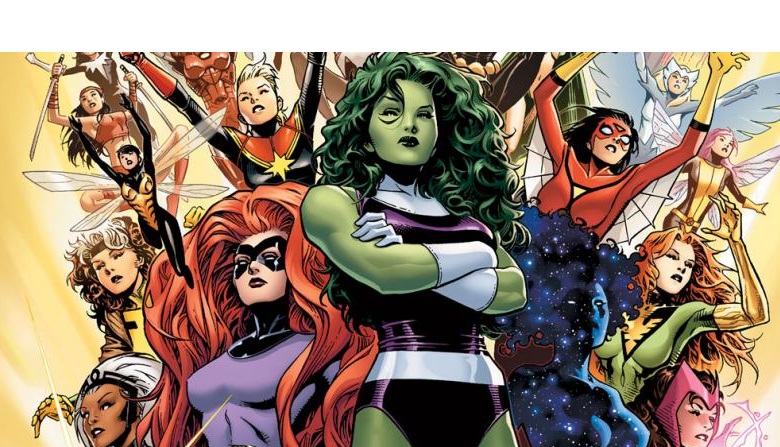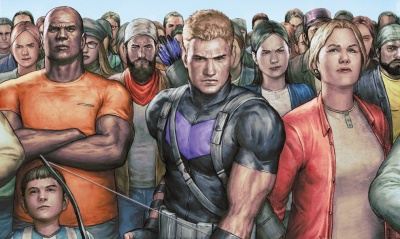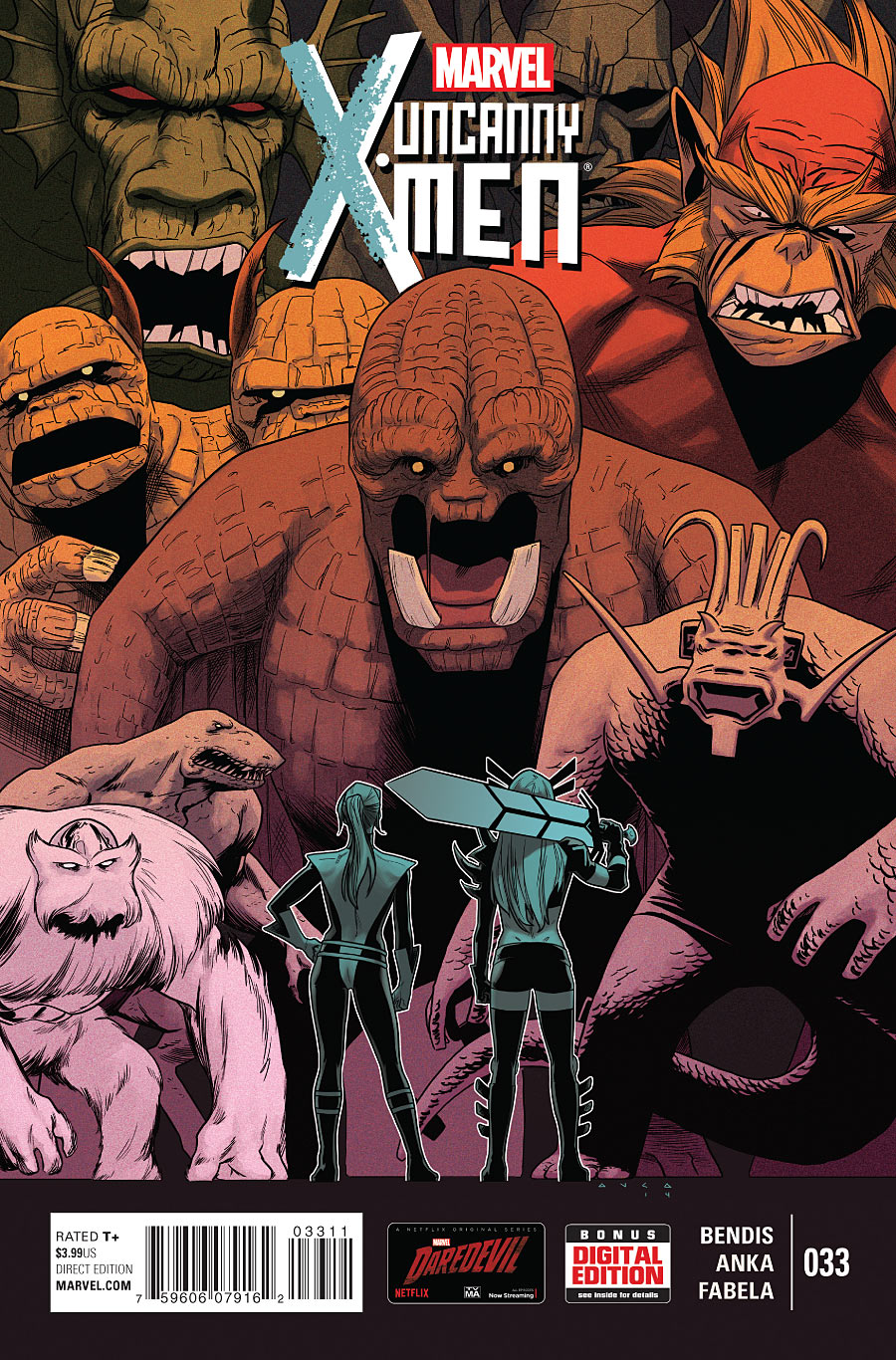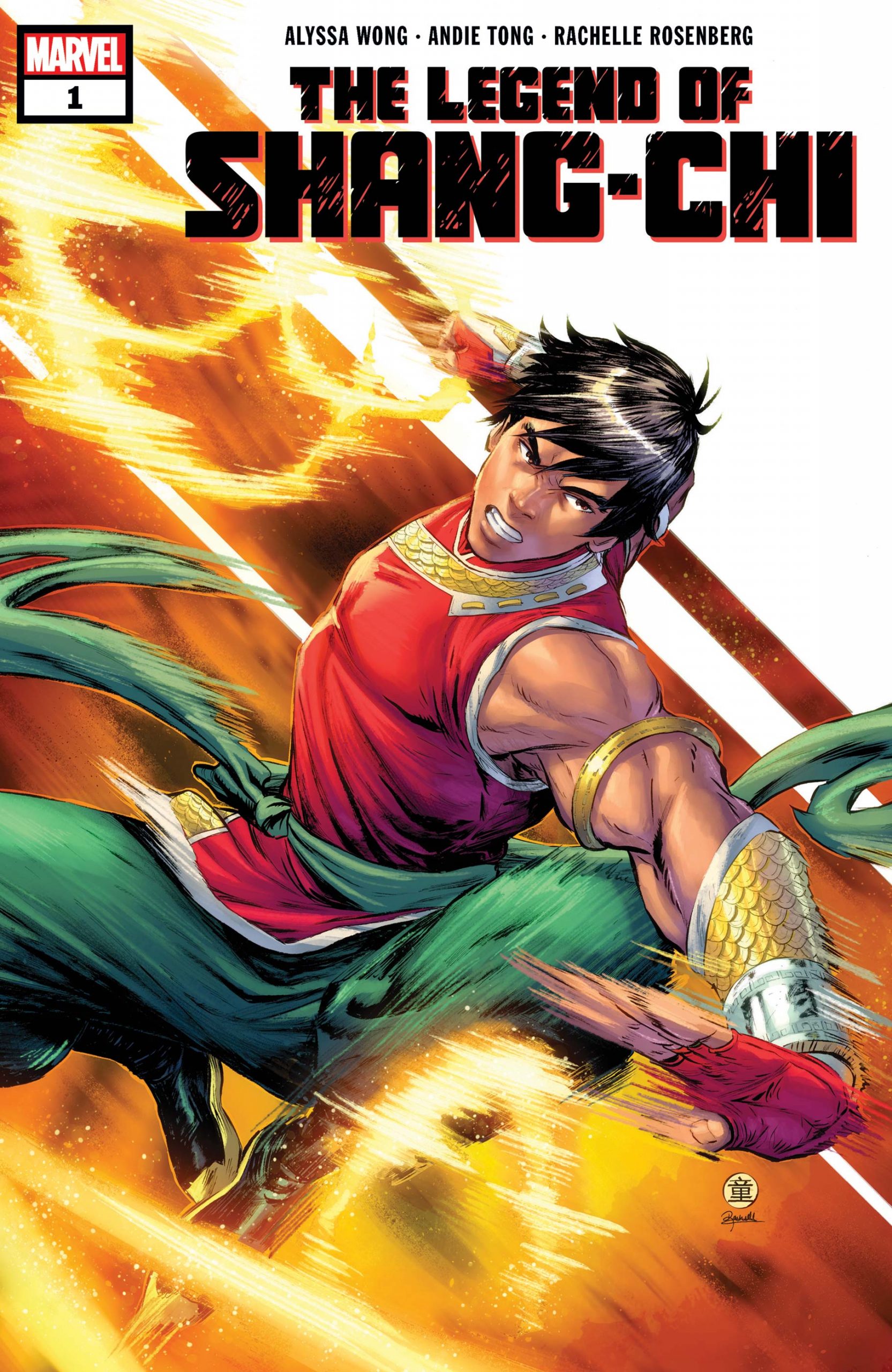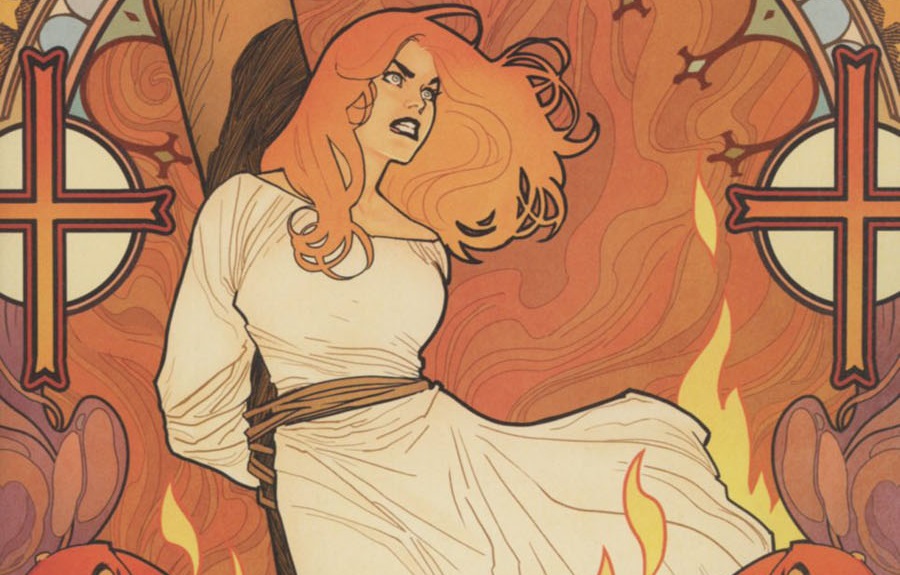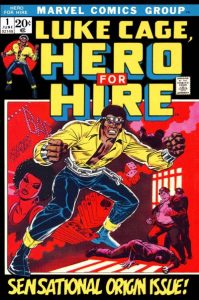
Luke Cage: Power Man should have been a failed experiment. It was a book created by four white men to capitalize on the Blaxploitation zeitgeist of the ‘70s. For all intent and purpose Luke Cage is a super powered Shaft created by Marvel to try and sell books to a new market. This was common practice at Marvel in this time period. Not only did we get Luke Cage but there was also Shang Chi: Master of Kung Fun, Deadly Hands of Kung Fu, and Iron Fist. These books were intended to mimic the Kung Fu movie craze of the time period just as the Punisher was meant to cater to the Death Wish and Dirty Harry audiences. Yet for comics that began as a bandwagon for waning fads these books turned out to be incredibly riveting books with the freedom to tell stories that didn’t fit in the mainstream Marvel Universe.
Luke Cage was not the first African American superhero but he felt like the first true urban superhero. The book began as Luke Cage: Hero for Hire and then morphed into Luke Cage, Power Man with issue #17 and finally just became Power Man. Luke began his life as Carl Lucas, a small time hood who goes straight when he realizes his actions have consequences. Even though Carl cleans up his act his best friend, Willis Stryker, does not and after a misunderstanding over the lovely Reva Conners Carl ends up framed for dealing Heroin and is shipped off to prison. This is where our first issue begins.
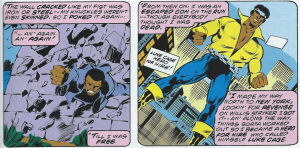
I love comics from the ‘70s. They accomplish so much in a single issue. Not only do we see the racist abuse that Carl suffers at Seagate prison but we also see his loyalty and honor in the fact that he refuses to rat out his fellow inmates even though it would mean a better life for him. After a severe beating by a guard Carl is selected for a medical experiment based on the Super Soldier Serum given to Steve Rogers to become Captain America. Only the experiment is sabotaged and Carl is gifted with super strength and bulletproof skin. Carl Lucas escapes from Seagate, works his way back to New York City where he takes on the identity of Luke Cage: the Power Man and becomes a Hero for Hire.
I didn’t get to read Luke Cage: Hero for Hire or Power Man when they were first released. I came to the character later once he was teamed with Iron Fist. When I first saw him I thought he was absurd. I was young but even as a child the yellow shirt, blue tights, yellow pirate boots, a giant chain for a belt and a tiara looked ridiculous. Yet don’t let the early costume fool you since these early adventures are some of his best.
I was lucky when I found a box of comics at a garage sale. It was one of my greatest comic finds ever as it was full of old Luke Cage issues as well as Iron Fist, Shang Chi: Master of Kung Fu, and many other ‘70s Marvel comics. These were not comics in mint condition that I would later sell for a cool profit. They were mangled stacks of comics with ripped covers, folded pages, missing staples, and back pages cut out for subscription purposes. Yes that used to be a thing. But I read those comics over and over again; so much so that I was convinced I knew Kung Fu. I read them so many times some of them finally did just fall apart. It was totally worth it as they were so much fun.
Those early Luke Cage: Hero for Hire and then Power Man books were just good. I personally love this era of comics, not just because it was my formative years but it was a time period of the beloved Marvel bullpen where true collaboration occurred. It was a time period when the first generation Marvel fans were producing the comics and pushed the boundaries. The Luke Cage comic would not have existed in the ‘60s. Yet it fit perfectly in the ‘70s. The stories were both street level but filled with super heroics. The villains were ridiculous with names like Mr. Fish, Chemistry, Stileto, and Spear. Yet worked for the tales being told. And Luke Cage was a hero for the people but a working hero for the people since he expected to be paid for his services. He even forced Doctor Doom to pay him.
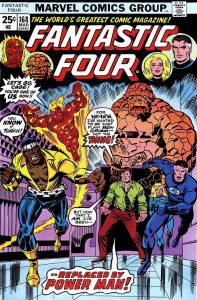
Power Man stories throughout the ‘70s and early ‘80s were fun but were also commentary on our country when we were at a social crossroads. The issues dealt with gang violence, the impact this violence has on communities, and the role Luke should have as an African American Super Hero. He developed a great supporting cast, with his office manager D.W. Griffith. The Doctor who gave Luke his powers, Dr. Burstein opened a free clinic with Claire Temple, who dates Luke for some time. Other characters dropped in and out as the stories progressed. As Luke was integrated more into the main Marvel Universe he joined the Fantastic Four for a time period when the Thing had lost his powers and they needed some muscle. Luke is put on retainer by the Defenders so he can both help defend the world but still pay his bills. He then adventured with this team for some time.
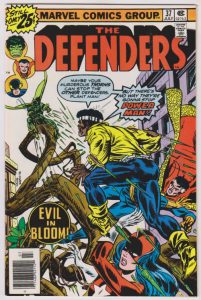
Yes many of the villains were ridiculous yet a few of them were dangerous and some of the best were linked to Luke’s past. Whether it was his time as a gang member or from his days in prison. Willis Stryker aka Diamondback who originally framed Luke was a significant villain for some time. The drugs used to frame Power Man came from a kingpin known as Cottonmouth. Luke eventually tracks him down and in an attempt clear his name the two will come into conflict. Shades and Comanche are former gang members with Luke and do some time with him at Seagate, as we see them in issue #1. They become thorns in Luke’s side, as they are unwilling to clean up their acts and even offer their services as Villains for Hire. Moses Magnum aka Magnum Force was introduced in Power Man and went on to be an X-Men villain. Gideon Mace emerged as a Right Wing extremist, with a mace for a hand of course, who tried to take control of New York City and Power Man was forced to take him down, with some help from D.W. Griffith.
The level of talent that worked on Luke Cage: Power Man is incredible as well. Originally created by Archie Goodwin and George Tuska with assistance from John Romita Sr. and Roy Thomas. Len Wein wrote some of the issues as did Marv Wolfman and Chris Claremont wrapped up the series. George Tuska was the first artist on the series but other notable penciler’s to grace the pages of Luke Cage are Kerry Gammill, Rick Buckler, and John Byrne wrapped up the title as it merged with Iron Fist in issue #50. Now these might not all be notable names today but to any Bronze-Age aficionado these were some heavy hitters of the time as well as young guns of the time. Now it may be hard to think of Wolfman, Claremont, and Byrne as young guns but this is one of the books they cut their teeth on before becoming the hottest artist and writers of the ‘80s.
As good as these comics were Marvel has done the reader a disservice. Netflix released their highly anticipated series, Luke Cage, a few weeks ago and Marvel has not put his original stories back into print. We luckily have the bulk of the Power Man & Iron Fist collected with two epic collections with a third and final on the horizon. We have early issues of Iron Fist in print and they some how wrangled the copyright issues over Shang Chi: Master of Kung Fu and have released two omnibuses with a final one to be released in the spring. But early Luke Cage is hard to find. You can pay high dollar for the Marvel Masterwork and even the first black and white Essential Trade commands over $100. Luckily the first 16 issues are on Comixology as well as the end of the Power Man series before it morphed into Power Man & Iron Fist. They’ve released his ‘90s appearances in Cage and the Heroes for Hire series will be collected starting December but nothing from his early days, from his glory days. Hopefully with success of the show and the upcoming the Defenders show we will finally see the early Luke Cage adventures. Believe me, they will be worth the wait.
